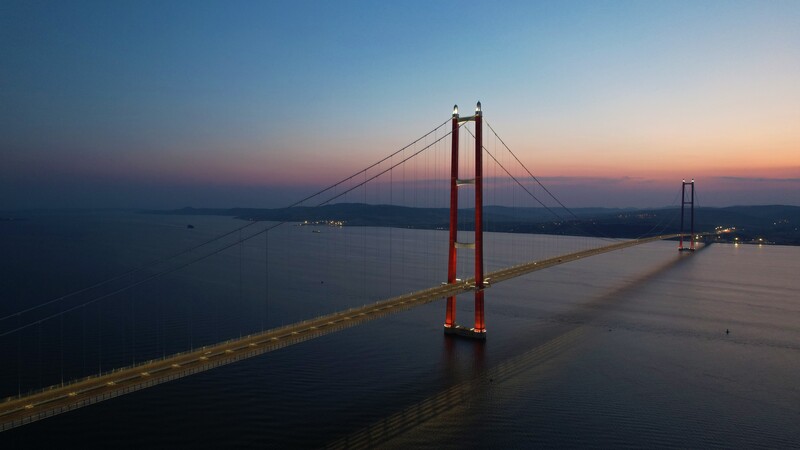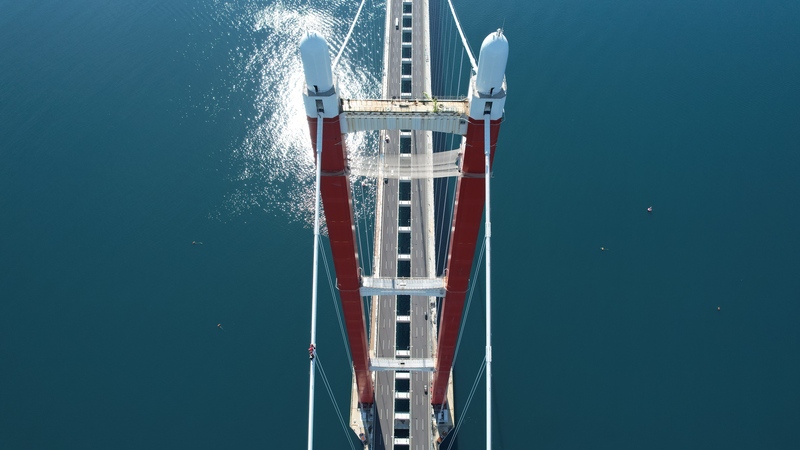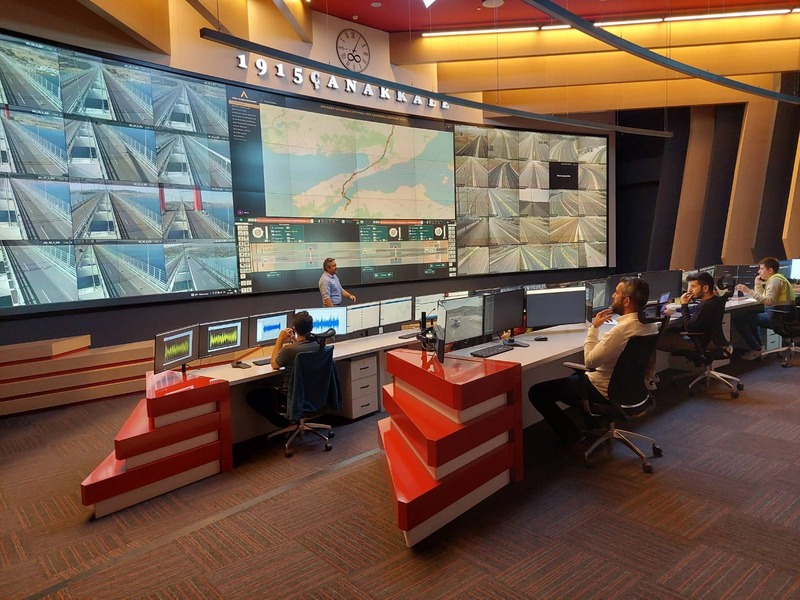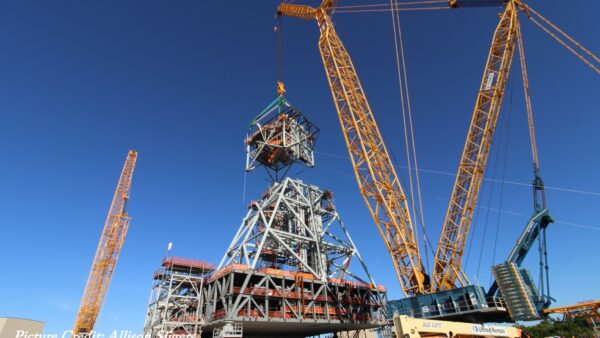
Turkish contractor Limak gave GCR a tour of the 1915 Çanakkale Bridge, which links Asia and Europe across the Dardanelles Strait.
Completed in 2022 after four years, the bridge has the world’s longest main span at 2km, with two 770m connecting spans.
The project was Turkish conglomerate Limak’s first suspended bridge project. It kept working throughout Covid.

Extreme winds were a main challenge. To meet it, Limak created an X-bracing release joint that anchored bridge segments on longitudinal and transverse axes while permitting other movements.
Limak halted heavy lifting operations when the wind speed exceeded 12.5m per second. Work on the catwalk was suspended when wind speed surpassed 15m per second.
Temporary deck-to-deck connections were also designed to allow for free rotation between deck segments.
Limak sourced the world’s two tallest cranes for the bridge towers, which were assembled on the dry dock at Gallipoli and transported to the worksite in the middle of the Çanakkale Strait, 328m high. It took 30 minutes for the M2480D Heavy Lift Luffer to lift the upper cross beam to its final position 318m above sea level.
The tower crane with the largest lifting capacity was also used, capable of hoisting 5500 tonnes.
Lifting gantries were also designed for the bridge as were specialised anchor blocks. These reduced CO2 emissions and construction time. Bridge towers were drilled 45m into the seabed on the Asian side of the bridge and 37m deep on the European side.
A main control room (pictured below) that now monitors the traffic on the bridge was used during construction to manage day to day movements.

A dehumidification and filtration system has been used to prevent steel erosion by reducing the heat level on the main cables and box girders.
Following the fall of a nut from the bridge onto a boat underneath a team were sent into the check all building materials were secure.
At 334m tall, the bridge contains the world’s second tallest bridge towers. It is joined by a 70m-long “ecological bridge” built nearby to provide a safe route for wild animals.
Named in reference to WWI’s Gallipoli campaign, the bridge was tendered under a public-private partnership comprising Turkey’s Limak and Yapı Merkezi alongside Korea’s DL E&C.
The bridge was designed by Cowi and has a design life of 100 years.
Further Reading:






